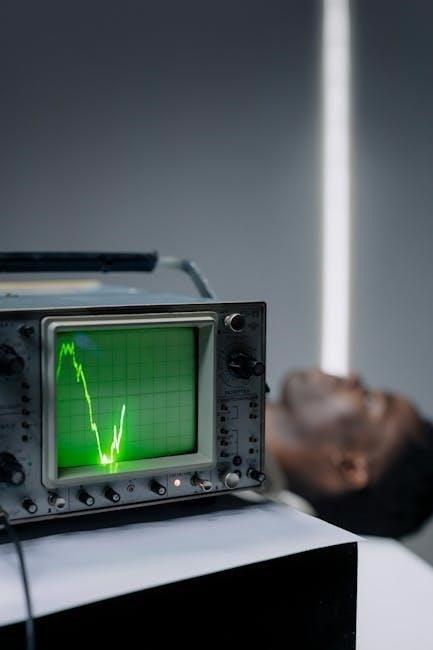Troubleshooting guide provides steps to diagnose issues with amp research power steps, helping users resolve problems efficiently using systematic approach and online resources available for reference and support always needed.
Understanding the Importance of Systematic Troubleshooting
Systematic troubleshooting is a crucial step in resolving issues with amp research power steps, as it allows users to identify and address problems in a methodical and efficient manner. By following a structured approach, users can avoid unnecessary trial and error, and instead, focus on identifying the root cause of the issue. This approach also helps to prevent further damage to the power steps or the vehicle, which can occur when attempting to troubleshoot without a clear understanding of the system. The internet provides a wealth of resources and guides to support systematic troubleshooting, including detailed instructions and videos. Using these resources, users can develop a comprehensive understanding of the power step system and its components, enabling them to troubleshoot effectively and make repairs with confidence. A systematic approach to troubleshooting also helps to ensure that all possible causes of the issue are considered, reducing the likelihood of overlooking a critical factor.

Common Issues with AMP Research Power Steps
Issues with amp research power steps include mechanical and electrical problems, requiring systematic troubleshooting and repair methods always available online for reference and support purposes only.
Amp Research Power Step Makes Noise During Operation and Other Problems
The amp research power step can make noise during operation due to various reasons, including worn out parts, misalignment, or debris accumulation. One of the common problems is that the driver’s side board retracts very far and gets trapped underneath the truck, causing noise and damage to the power step. Other problems include the power step not retracting or deploying properly, or making a grinding noise during operation. These issues can be caused by mechanical or electrical faults, and require systematic troubleshooting to identify and fix the root cause. The amp research power step troubleshooting guide provides a step-by-step approach to diagnose and repair these problems, including checking the fuse and relay, inspecting the power step mechanism, and cleaning the running board to prevent unwanted noise and binding. By following the guide, users can resolve these issues and ensure smooth operation of their amp research power step. Regular maintenance and cleaning can also help prevent these problems from occurring in the future.

Troubleshooting Steps for AMP Research Power Steps
Systematic approach helps resolve issues with amp research power steps quickly and efficiently always using online guides and resources available for support and reference purposes only.
Checking the Fuse and Relay for AMP Research Power Steps
To begin troubleshooting amp research power steps, it is essential to check the fuse and relay associated with the system. This step is crucial in identifying potential electrical issues that may be causing the problem. The fuse and relay play a vital role in the proper functioning of the power steps, and any issues with these components can lead to malfunctioning or complete failure of the system. By checking the fuse and relay, users can quickly identify and replace any faulty components, potentially resolving the issue. The process involves locating the fuse and relay, which are usually found in the vehicle’s fuse box or relay panel. Once located, the fuse can be checked for any signs of damage or wear, and the relay can be tested for proper function. If either component is found to be faulty, it can be replaced with a new one, and the system can be tested again to ensure proper function. This step is a critical part of the troubleshooting process and can help users resolve issues with their amp research power steps efficiently.

Advanced Troubleshooting for AMP Research Power Steps
Advanced troubleshooting involves inspecting wiring and circuitry for amp research power steps issues and faults using diagnostic tools and techniques always available online for reference and support purposes only.
Identifying and Fixing Mechanical Obstructions and Electrical Faults
To identify mechanical obstructions, inspect the power step’s moving parts and surrounding areas for any blockages or debris that may be causing the issue. Check for loose or damaged components, such as hinges or brackets, and tighten or replace them as needed. Electrical faults can be more complex to diagnose, but checking the wiring and circuitry for any signs of damage or wear can help pinpoint the problem. Use a multimeter to test for continuity and voltage, and consult the amp research power step troubleshooting guide for specific instructions. Additionally, checking the fuse and relay can help determine if the issue is electrical in nature. By systematically inspecting and testing the power step’s mechanical and electrical components, you can identify and fix the root cause of the problem, getting your amp research power steps working properly again. This process requires patience and attention to detail, but following the troubleshooting guide can help you resolve the issue efficiently.

Maintenance and Cleaning of AMP Research Power Steps
Regular cleaning and maintenance of amp research power steps is necessary to prevent debris buildup and ensure proper function always using online resources for guidance and support.
Cleaning the Running Board Mechanism to Prevent Unwanted Noise and Binding
To clean the running board mechanism, start by manually setting the running boards to deploy, this can be done by opening the door and placing your foot on the step. Next, prepare the area for cleaning by removing any loose debris, such as mud or dirt, that may be accumulated on the surface. Use a soft brush or cloth to gently sweep away any remaining dirt or debris that may be trapped in the mechanism. It is also important to check for any signs of corrosion or wear on the moving parts and apply a lubricant if necessary. Regular cleaning and maintenance of the running board mechanism can help prevent unwanted noise and binding, ensuring smooth operation of the amp research power steps. By following these simple steps, users can keep their power steps in good working condition and prevent potential problems. The cleaning process is relatively simple and can be done at home with basic tools and materials.
